Farewell to the Concrete Jungle
“Not all those who wander are lost.”
― J.R.R. Tolkien, The Fellowship of the Ring
The Arrival
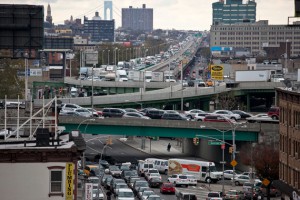
In those first sleepless nights, the smells of the Gowanus Canal were stirred up into the air by the cars down the Brooklyn-Queens Expressway. They wafted up into my artist loft apartment as I tossed and turned in my under-sized, rented bed. The honeymoon had ended and the reality of city life had begun to creep in. I would repeat to myself, “Some days you win, some days New York wins” with the resignation of a poker player. Those days New York usually won, but now and then a Midwest kid got his chance – and pounced.
You couldn’t tell in the summer of 2008 that we were about to crash. I played music with my band on a kiddie cruise around Manhattan to pick up some extra change while I prepared to enter the public school classroom. The city was always full of life, and you got out of it exactly what you put in – or a little more if you were lucky. Usually, that meant smiles and beers and late nights that soared into the skyscrapers because you always knew someone who knew someone. Work hard. Play hard.
On the Other Side of the Slope
The autumn arrived and teacher life began. Early mornings and ties laced up around the neck on the way to the subway station. Park Slope is that part of Brooklyn where all the NY Times reporters are rumored to live. Where the momma mafia rules the streets with strollers and organic, homeopathic, macrobiotic, vegan-tastic baby food. Your status in this ‘hood is determined by how high up the slope you lived. I started on rusty 3rd avenue, but with aspirations of 7th ave and then majestic Prospect Park West. It never occurred to me that work took my in the exact opposite direction, down 2nd ave to 1st and then across the stinky Gowanus to uncharted territory: Red Hook. Projects. Payday loans. Buses. Graffiti. And so much heart.
I thrived in Red Hook. It has this quirky mix of urban industrial yard and Scottish fishing village. Gentrification was, for the moment, on hold. Education was thriving. Spanish rice and beans from Papi on the corner.
Something changed. My teacher friend John told me he had to move because his roommate had been canned from Lehman Brothers and he couldn’t afford the steep Carroll Gardens rent anymore. Every day another bailout, another bank on the brink. Us teachers were getting anxious. Job cuts always loomed, and not just for Wall Street bankers. Unease lay itself down across the borough like a blanket of clouds.
Second Year’s a Charm
Meanwhile, in Red Hook, I was becoming worth my salt at the school. The students respected me now. They knew I didn’t take their crap, but that I really cared about them. I could level with them without losing my stature. I could lead without them falling behind.
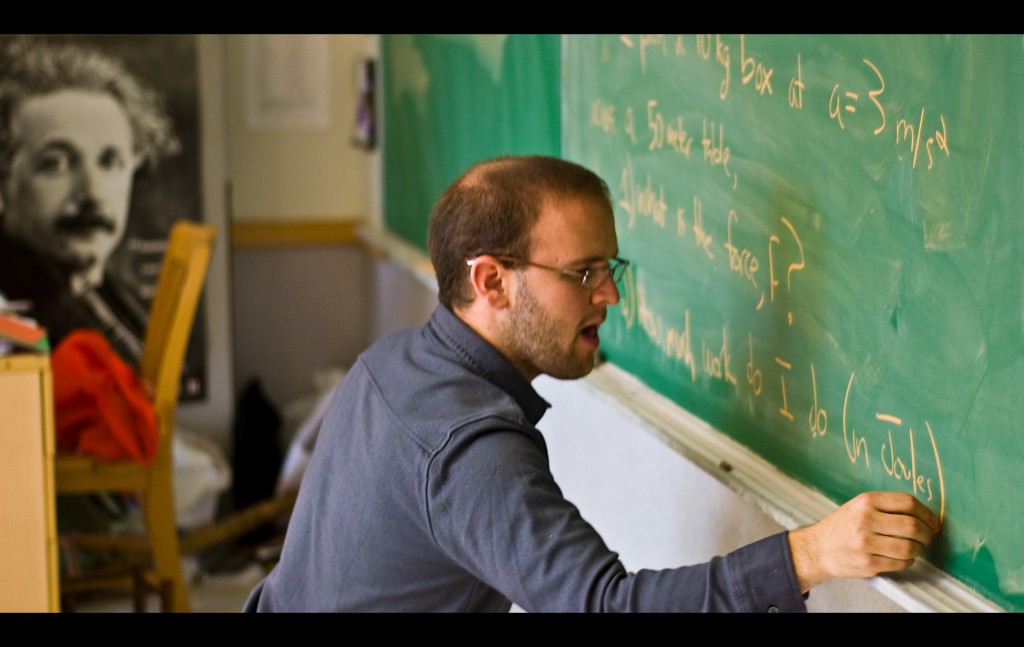
That didn’t mean everything was rainbows and butterflies. When you teach at a school for drop outs (“formerly truant students” was the more optimistic term used), you hope for the best but prepare for the worst. A student once tried to assault me in the classroom. Another time, they saw me with a female teacher taking a walk and the rumors began to fly between class bells. In other moments, students would confide deeply personal things to me. I have always had a soft spot for the underdog, but their stories took my empathy to a whole new level.
I would start the day in the projects and end it at a cocktail party in the penthouse of McGraw-Hill in Manhattan. This, I presumed, was the role of the teacher: bridge-builder between society’s classes, the glue that holds together a fragmenting, unequal nation. I started to piece together a topology of the social structure. My mind raced.
The Bridge Begins to Burn
By now, I had moved up to 6th ave. This wasn’t quite majesty, but as Plato once said: Never discourage anyone who continually makes progress, no matter how slow. The move up the slope had exposed me to the reality of life slightly higher up the “yuppie” (young professional) food chain: it really sucked. It sucked like ‘furniture-too-delicate-and-antique-to-sit-on’ sucks. So much momma mafia. Hefty rents. Before long, I had to get out of there.
Bed-Stuy, short for the Bedford-Stuyvesent neighborhood of Brooklyn, called in the form of a room opening up with a good friend. A traditionally black neighborhood, it was facing gentrification by young artists and creative types priced out of trendier hipster Williamsburg or yuppie Park Slope. Paradoxically I felt more at home here, perhaps because it reminded me of my hometown metro Detroit. Good, honest people with little presumption.
At work, fiscal austerity had multiplied the tension on staff. Somebody was going to be axed at the end of the year. Seniority dictated it would be a young teacher, but there were plenty of those at my school as there are at so many hard-to-staff, so-called “low-performing” schools. Restless to take on some leadership, I had gotten myself elected to union chapter leader and I became an advocate for many other teachers who felt the strain our principal put on us. It was flowing down from above him, as the DOE sought to pressure schools to graduate more kids faster and to do it with less resources. Teachers and their students were paying the bill left behind when bankers got up from the table and split.
I started to spend less time at McGraw-Hill and more at local union rallies and organizing meetings. It was exhilarating to know that there were so many staunch advocates for public education out there, from parents to teachers to community leaders and elected officials. I was introduced to that seminal rite of passage into the activist world: the Panel for Education Policy meeting. Here, passionate parents and firebrand teachers ridiculed and tormented the Mayor-appointed panel that made final decisions on which schools would stay open and which would close, which projects would be funded and which would not. The energy was electric!
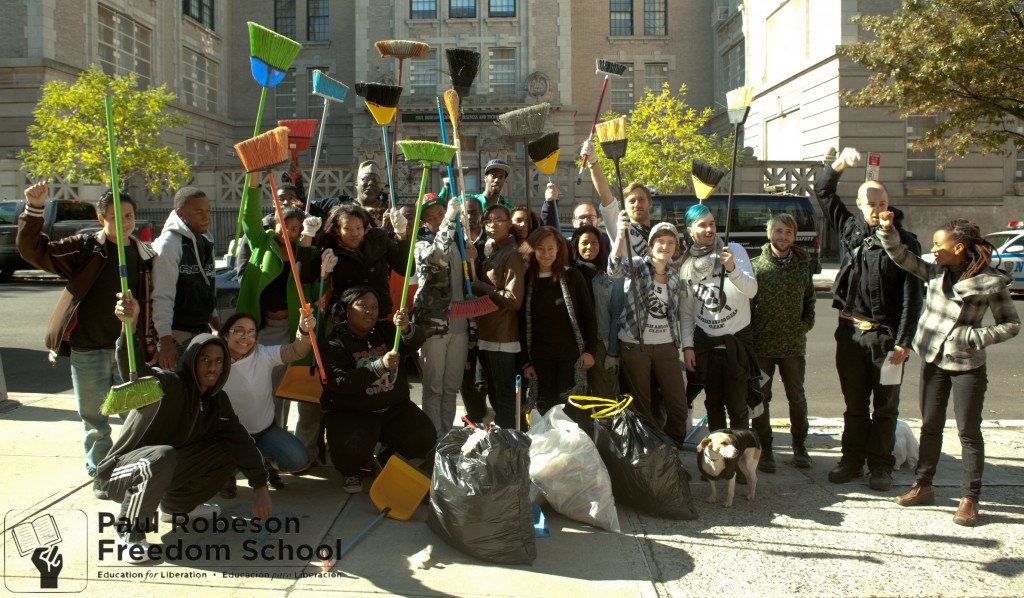
One day at work, I was startled when my principal called me into his office to tell me that, because of the budget cuts, my position was being excessed. I couldn’t believe it. I wasn’t ready for my teaching career to come to an end so soon. In a rare display of fragility, I broke down crying as soon as I left his office. The pain was raw and deep.
Reassessing
Out of the public schools now, I took a sabbatical from New York to clear my mind and found a teaching gig at an elite private boarding school. I went from teaching the poorest of the 99% to the elite .1% of the 1%. The difference? Nearly naught. Kids are kids. They face the same teenage angst and feelings of neglect from their parents who were either too poor or too rich to pay sufficient attention to their needs. The teacher would have to fill in as parent now.
I tried to help them put their hard times in context. I aimed to open their minds to the struggles of young people on the other end of the spectrum. It was like an economic abyss had opened up and I had a leg on either side as the two cliffs inched apart and I faltered precariously. The slow death of the middle class was tearing our country apart, and I felt the call of activism pulling me out of the classroom.
I returned to NYC rejuvenated, ready to take on the world again. Protests were erupting everywhere, as democratic uprisings threatened entrenched powers from Tunisia to Egypt to Spain and Greece. We would bring them to Wall Street, the belly of the beast, the “global Mubarak” as Occupy co-creator and visionary Micah White would put it. The year of 2011 filled me with a revolutionary fervor that invigorated my body and mind. Causes converged and the street became the public forum in which the people made not only their grievances but also their aspirations heard. Imagination was let loose. Hope and change were untied from their politics-as-usual leashes.
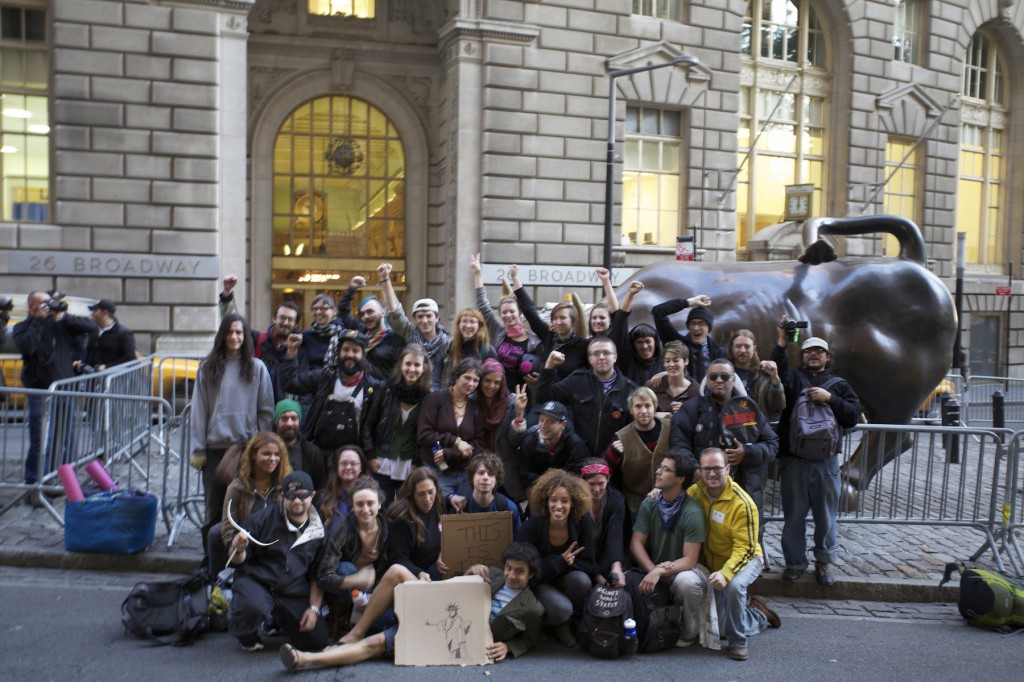
It’s the long haul that matters
By now, I had lived in NYC long enough to know that if you walk backwards on a moving escalator you end up going nowhere fast. But if you run forward, eventually you’ll hit your wit’s end, crash and burn. Best thing to do is ride the wave, and know that only so much can be accomplished in one Big Apple day.
I filled each day with beautiful action. I visited every borough, met new activists and took chances on people. I was wagering everything on this global revolution. I was all in, the only way I know how to be. And it was purely joyous.
I agreed to take on a project with the student leadership class at Paul Robeson High School alongside my 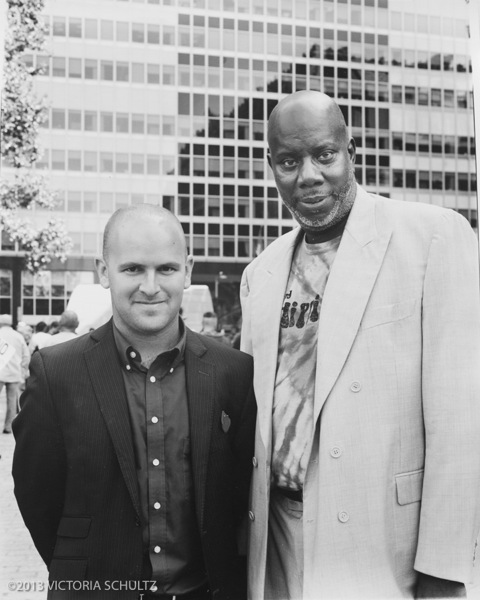 partner-in-justice Radio Rahim, the inspiration for the Spike Lee character of ‘Do The Right Thing’ fame. Radio just happened to be my Bed-Stuy neighbor down the street and a venerable character in the education activism scene. The project began as a simple morale-boost for the students as the city was targeting them for closure, but with the energy infused by Occupy it morphed into an all-out campaign to save the school.
partner-in-justice Radio Rahim, the inspiration for the Spike Lee character of ‘Do The Right Thing’ fame. Radio just happened to be my Bed-Stuy neighbor down the street and a venerable character in the education activism scene. The project began as a simple morale-boost for the students as the city was targeting them for closure, but with the energy infused by Occupy it morphed into an all-out campaign to save the school.
The students escalated their campaign in April 2012, releasing a video calling on students across the city to walk out of school with them in solidarity on May 1st, “May Day”. The principal responded with a school-wide clamp-down and a letter home to parents the day before the planned action, complete with a link to the students’ video. His actions back-fired, as parents watched the video with their children and sided with them against the administration. The next day, dozens of them joined community activists and leaders outside to greet the protesting youth.
I was elated. Radio and I had worked hard to garner community support for the students, but they were the ones who had pulled off the magic: all their peers walked out with them! Not only that, but hundreds of students from schools across NYC joined them as well for a teach-in at Fort Greene Park. Even youth from the esteemed Brooklyn Technical High School – far from a struggling school slated for closure – joined their peers from Robeson that day in protest. It was a victory not just for public education, but for the now-globalizing Occupy movement, showing the pendulum was swinging back from banks and corporations to workers and students.
After the Protest
It isn’t easy to sustain the energy of the streets when everyone is back home. My Bed-Stuy mentor, the late and great Jitu Weusi, once taught me that to make a social movement sustainable it must be about education. As Occupy Wall Street’s raw and righteous anger simmered down, my education activism ascended once again but with a new consciousness. The post-Occupy world was different. The analysis had sharpened: we now spoke of class and capitalism instead of just austerity and tax justice. An intelligentsia of sorts was emerging, and I struggled to find my place amongst the greats: David Graeber, Naomi Klein, Angela Davis, Cornel West, Elizabeth Warren, and young rising stars like Nelini Stamp, Marissa Holmes, Jesse LaGreca, Micah White, and many more.
Back in Brooklyn, the veteran students of Robeson had joined together to help us build the Paul Robeson Freedom School to carry on the legacy of the closing high school. I was asked to serve as co-Principal alongside Radio, and we worked to build local partnerships to open a summer program for at-risk middle-school students. The timing couldn’t have been better, as activists from Zuccotti Park searching for community engagement mingled with local youth at street barbecues in the hot city summer evenings. The NY Times even called it “Camp Occupy”.
Going Global
I knew that what we began in Zuccotti had been just the continuation of an international wave of revolt. After the first summer of Freedom School, I grew anxious to chart out the contours of this global uprising. I spent 2013 visiting and speaking at conferences and with activists in 10 different countries: Brasil, Tunisia, Egypt, Paris, the UK, Turkey, Mexico, Slovakia, Czech Republic, and Austria. I met revolutionaries and regular folks swept up in a movement for real democracy, social justice, cooperative economics and dignity for all. I dodged tear gas canisters and shared heady late-night conversations with visionaries who dared to believe that another world is possible. I soaked it all in.
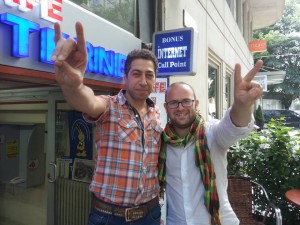
My last visit was to the Lacandon Jungle of Southern Mexico. The occasion was the 20th anniversary of the Zapatista indigenous rebel uprising, and a Freedom School was being hosted to bring together global activists, academics and journalists to learn about the progress the indigenous peoples had made since putting down their arms and picking up plowshares. I heard for the first time the term “city savages”, and as a city boy for life it stung. The seed of my mental transformation away from New York City had been planted.
Back to the Big Apple
I find myself today packing up and wrapping up the loose ends of my nearly 6-year dive into Gotham life. I can’t help but take stock of what has and hasn’t changed.
There’s been a good dose of progress towards a more just and equitable New York City since I arrived in 2008:
- I arrived to a billionaire mayor who spent snowstorm weekends in Bermuda, and I leave the city to one who campaigned in Zuccotti Park on the Tale of Two Cities and tackling income inequality.
- Cathie Black, magazine-publisher-turned-cocktail-party-friend-of-the-mayor-turned-schools-chancellor, has been replaced by a life-long educator, Carmen Fariña. (I’m particularly proud of having spearheaded the campaign to oust Black.)
- A fierce direct action campaign begun by US Uncut and escalated by Occupy Wall Street helped secure the extension of the Millionaire’s Tax and now de Blasio’s proposed tax on the wealthy to fund universal pre-K.
- Young activists are pushing the envelope to find new ways to collectivize and organize workers, like the Hot & Crusty crew.
Not all news is good, though. Some worrying trends since I arrived in New York City:
- The reported number of homeless people in city shelters has nearly doubled, to 53,270 (Source: CoalitionForTheHomeless.org)
- The Bloomberg administration has closed 171 schools, nearly all of them in low-income, black and Latino neighborhoods
- The city’s wealthiest residents and developers are still lavished with unnecessary tax breaks in return for campaign bribes, like those for One57 and four other luxury Manhattan condos.
- Stop-And-Frisk isn’t dead yet, and police brutality is still rampant in the force – most notably and disturbingly inside and around public schools
The Path Ahead
I am excited to share with you that I’ll be moving shortly to Nehalem, a small town on the north coast of Oregon. I’ll join fellow activist and Occupy Wall Street meme creator Micah White to help kick off the #YouAreNeeded campaign to build grassroots political power. I’ll also take some much-needed time to reflect and write on my experiences as a young activist and educator. The Pacific coast of Oregon is perhaps one of the most beautiful features of this country, and it is a treasure that belongs to the people. The Zapatistas say, “The land belongs to those who work it.” In the same way, those who cultivate the real estate of their minds – thanks, Chuck D for that one! – can truly claim ownership over their thoughts. It’s time to tend to my mind.

Thank you, New York
I owe the deepest debt of gratitude to all of those who enriched my life here in New York over the past 6 years. You have made this city bearable. You have comforted me when the grinding wheels of the subway trains, and the blazing sirens, all conspired to derail my calm. You have nurtured my creativity and my endless curiosity. You have challenged me to live more fully and without holding back, and then rescued me from the edge when I tipped. It is to you before any bank that I owe an infinite invoice of appreciation. Thank you.
To my closest friends: love massive. (To my closest enemies: the same!)
To Radio Rahim: peace noble.
To the staff and students of South Brooklyn Community High School: keep dreaming big. The elevator out of Red Hook soars to the sky.
To the Robeson Fighters – Akeem, Sue, Troy, Lizzie, Ana, all of you – never give up. Know that you inspired thousands with your brave stand.
To all of the corrupt NY state politicians who aren’t yet behind bars: don’t sigh a breath of relief so fast – I leave in my stead a solid cohort of progressive activists who are the future of this broken political system, and they’re finding their way into it.
To Occupy Wall Street: all day, all week.
To Wall Street: keep looking for that way out. We’ll have good-paying jobs for you on the other side once we win.
To all my family and my people in Detroit: you put the fight in me.
Solidarity forever,



